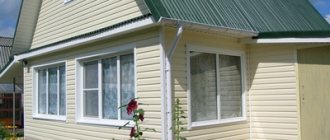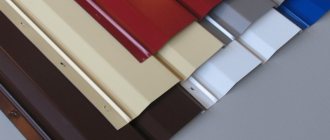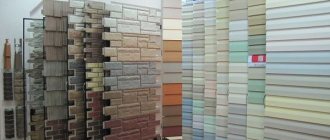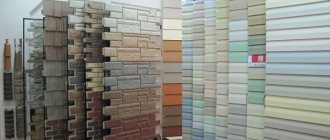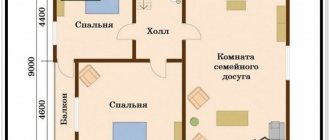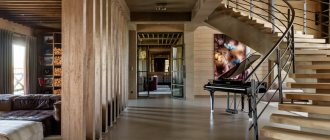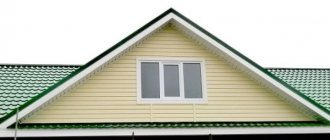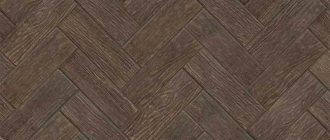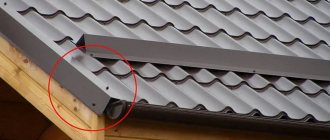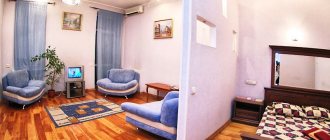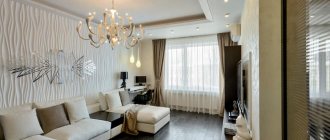Hello, dear friends! When choosing vinyl (PVC), metal or wood siding for cladding a house, much attention is paid to what palette is presented. The choice of siding color is as important as its quality and quantity.
The number of manufacturers is growing. In addition to the obvious leaders, such as Deke or Grand Line, new companies are emerging. And many of them offer a wide range of colors.
The same wood imitation can have different designs.
The question is what color suits your home, what suits your taste and just the surrounding environment.
Today I’ll tell you what siding colors are for cladding a house. And how they fit together.
What to look for when choosing a harmonious combination of shades
PVC siding and its huge color palette sometimes causes stupor.
How to decide on such a variety of finishes? Every year there are more manufacturers, new shades and textures are added. Therefore, the question “How to choose the color of siding and roofing” remains one of the most popular. When choosing the color of siding, you should also take into account the shades of the roof, drainpipes, plinth, doors, window frames and other elements.
Fiber cement siding Cedral
There are several aspects that you must pay attention to in order to create a harmonious combination of shades:
- Management requirements from the locality (if any).
- Geographical location and climatic conditions: special attention to relief and type of terrain.
- Technical characteristics of the house, its parameters and purpose.
Already based on these criteria, you can cut off some of the color schemes of vinyl siding or panels.
Next, the overall color scheme is determined - cold or warm. In the table below you can see the dependence of emotional perception on the color of the house trim.
Dependence of emotional perception on the color of the facade
Common mistakes
Before installing siding panels with your own hands, you should study all the subtleties and features of the process in order to avoid common mistakes. They will subsequently cause many problems and affect the efficiency and service life of siding and insulation.
The main mistake is incorrect calculation of materials and lack of spare (which is rarely superfluous) parts. As a result, the supposed cladding without flaws turns into cladding with obvious defects. Not only does this affect the aesthetics of the facade, but also the tightness of the coating deteriorates. This creates a risk of moisture getting into the intermediate layers and damage to the insulation.
The second most popular mistake made by self-taught installers is not to use waterproofing. And if the polyurethane foam still survives such treatment, then the mineral wool will swell, begin to put pressure on the siding and lose up to 80% of its effectiveness.
An equally serious mistake is to mount the panels flush against the outer wall and click the locks all the way. Siding is made from materials that contract and expand under the influence of ambient temperature. If you do not leave a few millimeters of play, it will simply crack in the first severe frosts.
It is not recommended to screw self-tapping screws into the “body” of the panel. It has a perforated side for fastening. The self-tapping screw is screwed into the center of the hole, not at the edge. It is prohibited to fasten structural parts from the outside with non-galvanized (rusting) nails. Rust will appear on the panels, and they will hold up worse.
The last mistake is not serious, but it is also better not to make it. We are talking about using glossy panels. Yes, they look better, but not for long. And they heat up faster than matte ones.
Top 7 best siding color combinations
There are combinations of facade and roof colors that have been tested by experience and time. Such solutions always look advantageous.
Siding white
Light-colored vinyl siding visually increases the size of the building. Therefore, it is ideally suited for small country houses.
A roof of red, gray, green, blue, purple or black will go well with it.
Siding Deke in Cream color
Cream shade, one of the varieties of white, is also common in the design of residential buildings.
The photo shows the object of work from.
The old house, built in the 80s, was radically transformed after the work was done - updating the facade and roof. What the building was like before the cladding can be seen in this article. It also contains a detailed estimate with the cost of the material, all additional elements and installation work.
To order turnkey home finishing, go to our section with examples of work, reviews and leave a request.
Blue panels
Siding Deke in Plum color
Vinyl siding blends harmoniously with white, gray windows and dark shades of the roof. Blue refreshes the house and effectively sets it apart from other buildings.
Siding brown
Vox siding in Golden Oak color
The brown shade of the facade is a symbol of confidence, modesty and simplicity. Harmonizes with dark green, gray and chocolate shades of the roof.
Red panels
Siding Mitten
A popular combination is red siding, white windows, and brown or earth-colored roofing. Red is used strictly either on the facade or on the roof.
Beige siding
Siding Deke in Caramel color
This is a neutral option, which is often taken as a basis. And they decorate at their own discretion, because beige goes with almost all colors.
Green panels
Docke siding in Halva color
Green shades represent peace and tranquility. Suitable not only for residential but also for office buildings.
Gray finish
Siding Deke in Halva color
Gray vinyl siding, at first glance, may seem quite boring in the classic version. Therefore, the roof is often decorated in a dark color, and the windows are white. And the house will look completely different if it is covered with gray fiber cement siding. Such panels will give the house a strict look in combination with a new design.
Advantages
When analyzing the advantages and disadvantages, we will talk about vinyl and metal materials, since this is what is meant when they talk about cladding a house with siding.
- It is resistant to sunlight, ultraviolet radiation, gusts of wind and other natural phenomena that it will encounter during operation.
- This material protects the walls of the building from negative influences. If it was installed on old structures, it can prevent their further destruction. But to do this, before covering the old surface must be treated with a primer.
- It is characterized by easy installation and replacement of individual elements if the need arises.
- Siding can retain its original appearance for many years. It does not need to be additionally painted or treated with protective agents. The only thing that will be necessary is to wash it. Drops of rain, wind with dust particles do not make it cleaner. To ensure that it always pleases you with its appearance, wash it at least once a year.
This is interesting: Projects of two-story houses with a garage - comfort and conciseness
How to diversify the facade of a house
In addition to the classic siding color options, a combination of two or three shades is also possible. Almost all manufacturers of PVC panels produce collections in such a way that siding from the same series can be combined when cladding a house.
In the photo below you can see the work of our team of professionals. Even with the help of two contrasting shades, you can significantly diversify the exterior of your home.
Covering a house with siding by the Avi company
Home decoration with contrasting inserts
Emphasis on windows
Spectacular design examples for inspiration
There are many examples of finishing houses with panels, among them it is easy to find an option that matches the colors.
But not everyone likes plain panels. To emphasize individuality, many try to stand out by combining several shades or highlighting individual parts of the house. Most often, corners are highlighted (for example, trimmed with stone or brick), a porch or terrace, parts of walls (for example, under a window or balcony).
You can use different shades when finishing different floors. For example, brick or stone on the first and wood on the second, or dark wood on the bottom and light wood on top.
When using colored finishes, you can “draw” patterns: horizontal stripes, entire trapezoids on the walls, or lay out columns.
It is important to remember that many spectacular options involve high costs due to the use of different panels. The variety of siding colors allows you to realize almost any idea. A rich palette and imitation of natural materials will help you get your dream home without extra costs.
What should not be used in the exterior
To minimize errors when choosing the design and colors of the facade, you should consider several nuances:
- No more than three shades on the facade.
- It is better to choose colors in the store itself, and not on the website. Our company provides a visit of a specialist[/anchor] with product samples. This is even more convenient, because you don’t have to go anywhere, but at the same time you will have the opportunity to see the shades of the siding live.
- It is better to select all small details, such as window frames, door openings, drainpipes, cornices in one color.
- Particular attention to the climatic features of the area. For example, for southern regions it is undesirable to use rich dark tones. This way, the siding will deteriorate much faster - the top layer of the panel will actively deteriorate under the rays of the scorching sun.
Fading of siding panels
Fading of the material occurs due to active exposure to sunlight. Over time, the color of the house facade loses its saturation and changes to a lighter shade.
If a low-quality type is selected, this process will begin too quickly.
When it comes to colors, dark and bright colors lighten faster. Fading is the loss of activity of the dye that was applied. Obtaining bright colors and some shades comes down to mixing shades, so the stability is lower. The best option, if you do not want to see the selected color lighten, is to use white siding; it will not fade.
The best option, if you do not want to see the selected color lighten, is to use white siding.
Insulation
One of the main advantages of siding is that it is easy to “hide” a layer of insulation under it. This significantly saves heating costs during the cold season and maintains a comfortable temperature in the room all year round.
In order for the insulation to serve for a long time and efficiently, it is important to choose the right materials. This is not only the insulation itself, but also intermediate layers that will protect the house and walls from condensation, overheating and other problems that are possible due to improper insulation
Properties of good materials in the insulating layer:
- ability to pass air and “breathe”;
- resistance to moisture and fire;
- resistance to freezing and temperature changes;
- ability to improve sound insulation;
- environmental Safety;
- durability.
The choice of insulation is the most crucial moment. Let's consider materials with suitable properties.
- Extruded polystyrene foam (sometimes called penoplex). In fact, it is the latest generation of foam plastic. Since old-style foam plastic begins to crumble within 5-10 years (and siding lasts many times longer), it quickly loses its effectiveness as insulation. But expanded polystyrene has all the necessary qualities. It is moderately dense, porous, lightweight (does not put a load on the profiles), cheap, durable, resistant to moisture, allows walls to breathe (if not mounted end-to-end), protects from the cold in winter and does not create a “steam room” in the house in summer, and also perfectly muffles extraneous noise from the street.
- Mineral plate (wool). It is characterized by high density and strength with a small thickness, meets the requirements of building codes, provides ventilation, is bioresistant, and improves the insulating properties of house cladding. But mineral insulation also has disadvantages: in the absence of waterproofing and moisture gets on it, the material loses up to 70% of its heat-insulating properties. Accumulates dust over time. Only low-quality mineral wool is cheap, but for a good one you will have to spend a tidy sum.
Basalt wool, glass wool and ecowool have similar properties, but they are more often used for indoor insulation.
- PPU. Sprayed polyurethane foam is an effective insulation material, but requires special equipment for application. Since the mass is applied to the wall in liquid form, it can be used before installing hangers and profiles, due to which “cold islands” will not form in the structure. But when spraying polyurethane foam there is no ventilated gap left on the wall. The wall will not breathe. Otherwise, this material is superior to others in its technical characteristics.
- Foam glass. A worthy alternative to sprayed polyurethane foam. Working with foam glass is easier due to the fact that the material is sheet. It has a porous structure, light weight, high-level insulating qualities, resistance to moisture, rot and fire, is able to breathe, is easily cut into pieces of the required thickness, and does not shrink over time. Its service life exceeds the service life of many types of siding. Its significant drawback is its high cost. But if it is possible to make expensive cladding, it is better to use foam glass than other materials.
- Foil sheet insulation. These materials are typically porous and made from a form of foam and sealed with a reflective “shell” on top. This gives them an undeniable advantage - the ability of the insulation to retain heat in the house at sub-zero temperatures and the ability to prevent overheating of the room from the inside at high temperatures outside.
Do not forget about waterproofing and vapor barrier. These thin layers will extend the life and increase the efficiency of the insulation, but their absence in most cases reduces the effectiveness of the material to nothing.
Waterproofing is a layer of thin PVC film or other thin sheet material that is overlapped over the insulation. That is, it is located between it and the siding and is necessary in order to prevent moisture from entering the insulation.
The vapor barrier is also made of a fairly thin material, which is mounted on the reverse side - between the insulation and the wall of the house.
To work with these materials you will need scissors or a sharp knife (to cut out fragments for hard-to-reach places), construction tape and a construction stapler.
Features of care
To maintain the neat appearance of your home, it is necessary to occasionally clean the surface of the siding panels from dirt. If the contamination is insignificant, then it can be easily removed using a strong stream of water . You can use a regular Karcher for this. If more significant dirt appears on the surface, use a soft brush to remove it.
If mold is found on some panels, then after removing it, the panels must be treated with a solution with a 5% concentration of chlorine. It is prohibited to use chlorine in its pure form on panels. You cannot clean the surface if the temperature outside is low.
It is not recommended to use various cleaning products that include abrasive structures, as they can damage the top layer of the material . Chemicals should not be left on the siding surface for more than 10 minutes.
